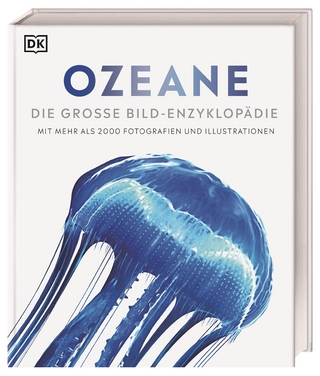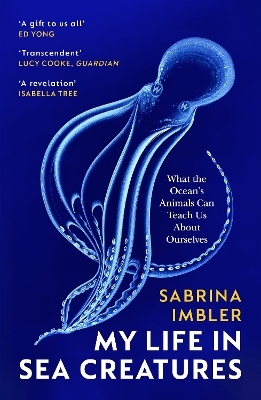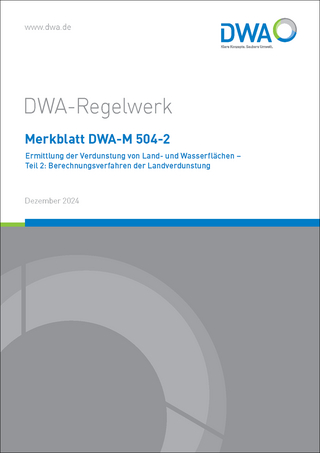
Climate Change Impact on Groundwater Resources
Springer International Publishing (Verlag)
978-3-031-04709-1 (ISBN)
lt;b>Dr. Balamurugan Panneerselvam is a Postdoctoral researcher in the Department of Civil, Architectural and Environmental Engineering, University of Naples Federico II, via Claudio 21, 80125, Naples, Italy. His current research interests include groundwater quality assessment for drinking, irrigation and human health risk associate with major contaminants such as nitrate and fluoride in arid and semi-arid region and also related to groundwater related issues. He extended his research interest in the flied of wastewater treatment using moving bed bioreactors, performance evaluation of bioreactor in biogas unit. He received his Doctoral degree from the Anna University Chennai in 2019. His thesis was based on the groundwater quality assessment using GIS techniques in Salem district, India. He has published more than 50 papers in international and national journals. He is privileged to act as Technical Reviewer in journals in the platform of Springer, Elsevier and MDPI. With his immense interest in multidisciplinary research, his recent investigations are focused on parameter estimation using machine learning algorithms, innovative floating structures, and GIS-based potential assessment of photovoltaic systems in India.
Dr. Chaitanya B. Pande completed Ph.D. in Environment Science from Sant Gadge Baba Amravati University, Amravati and M.Sc. in Geoinformatics from Amravati University in 2011. He has more than 10 years of teaching, research and industrial experience. He is a reviewer for several scientific journals of the international repute with editorial board member in Journal of American Journal of Agricultural and Biological Sciences. He has published 57 research papers, 1 textbook, 1 edited book entitled "Groundwater Resources Development and Planning in the Semi-Arid Region" in springer platform, 19 conference papers and 5 book chapters with more than 840 citations. His research interests includes Remote Sensing, GIS, Google Earth Engine, Machine Learning, Watershed management, Hydrogeology, Hydrological Modeling, Drought Monitoring, Land Use and Land Cover analysis, Groundwater Quality, urban planning, Hydro-geochemistry, Groundwater Modelling, Geology, Hyperspectral Remote Sensing, Remote Sensing and GIS application in natural resources management, watershed management and Environmental Monitoring and assessment subjects.
M. Kirubakaran, basically a civil engineer and completed M.Tech in Remote Sensing at Anna University Regional Campus, Tirunelveli, TN, India and currently pursuing Ph.D under the faculty of Civil Engineering, Anna University, Chennai, TN, India in the area of Microwave Remote Sensing (InSAR). He has published more than 25 research articles in reputed international journals of Springer, Taylor and Francis, and Elsevier which includes "Environmental Research, Marine Pollution Bulletin, Environmental Geochemistry and Health, International Journal of Environmental Analytical Chemistry, Environmental Science and Pollution Research, Human and Ecological Risk Assessment, etc". Kirubakaran's research broadly focuses on Remote Sensing & GIS applications for Environmental issues, Water Resource management, Air Pollution, Solid Waste Management, Subsidence monitoring, Disaster management, Climatic Change, Urban Planning etc. He is privileged to act as Technical Reviewer in Journals including Applied Water sciences (Springer Publisher), Asia-Pacific Journal of Regional Science, Proceedings of National Academy of Sciences Part A Physical Sciences, Marine Georesources and Geotechnology etc. He is a Life Member of Indian Society of Remote Sensing, Member of International Society for Research and Development (ISRD), Associate Member of Institute of Engineers (India), and life member of Indian National Cartographic Association.Dr B. Anand M.Tech, Ph.D (KIT-Kalaignar karuna
Chapter1. Introduction.- Chapter2. Properties of groundwater and its importance.- Chapter3. Groundwater and Health in Semi-arid and Arid Regions.- Chapter4. Groundwater Quality Status of Semi-Arid and Arid Regions.- Chapter5. Assessment of Groundwater Quality mapping for drinking purpose in semi-arid and arid regions of India.- Chapter6. Elimination of Fluoride from Drinking groundwater water Supplies.- Chapter7. Remote Sensing and GIS for groundwater geochemistry.- Chapter8. Groundwater and Artificial Recharge Planning.- Chapter9. Assessment of the appropriateness of drinking and irrigation groundwater.- Chapter10. Hydrological process in arid and semi-arid region.- Chapter11. Factors influencing hydrological process.- Chapter12. Human Health risk assessment.- Chapter13. Climate change Impact of nitrate contamination on human health.- Chapter14. Climate change Impact of fluoride contamination on human health.- Chapter15. Heavy metals influencing factors.- Chapter16. Mitigation Measures of Fluoride and Nitrate Contaminated Regions.- Chapter17. Hydrologic modelling for ungauged basins: An overview of past, present and future directions.- Chapter18.- Appraising the groundwater potential of Liddar sub-basin (western Himalayas) using geospatial techniques.- Chapter19. Groundwater Potential Zones (GPZ) delineation in Dhamani river basin in Kolhapur district, Maharashtra, India, using Remote Sensing (RS), Geographical Information System (GIS) and Multi-Criteria Decision Analysis (MCDA) techniques.- Chapter20. Assessment of groundwater potential zone mapping for development of semi-arid region through AHP and GIS techniques.- Chapter21/ Assessment of Groundwater Prospective zone in Adigrat Town and its surrounding area using Geospatial Technology.- Chapter22. Computation of rainfall infiltrates into Coastal soil of Andhra pradesh, India.- Chapter23. Feasibility assessment of low-cost filter to adopt in roof top rain water harvesting (RWH).- Chapter24. Prioritization of sub-watershed through Morphometric Analysis of Amaravathi Watershed using Geoinformatic Techniques.- Chapter25. Conclusion - Climate Change Impact on Groundwater Resources.
| Erscheinungsdatum | 27.08.2023 |
|---|---|
| Zusatzinfo | XVI, 480 p. 191 illus., 184 illus. in color. |
| Verlagsort | Cham |
| Sprache | englisch |
| Maße | 155 x 235 mm |
| Gewicht | 746 g |
| Themenwelt | Naturwissenschaften ► Geowissenschaften ► Hydrologie / Ozeanografie |
| Schlagworte | Artificial recharge mapping • climate change • Groundwater monitoring • health risk assessment • Hydrochemistry • Hydrology • Pollution mitigation • Remote Sensing • Water Quality Mapping |
| ISBN-10 | 3-031-04709-5 / 3031047095 |
| ISBN-13 | 978-3-031-04709-1 / 9783031047091 |
| Zustand | Neuware |
| Informationen gemäß Produktsicherheitsverordnung (GPSR) | |
| Haben Sie eine Frage zum Produkt? |
aus dem Bereich


